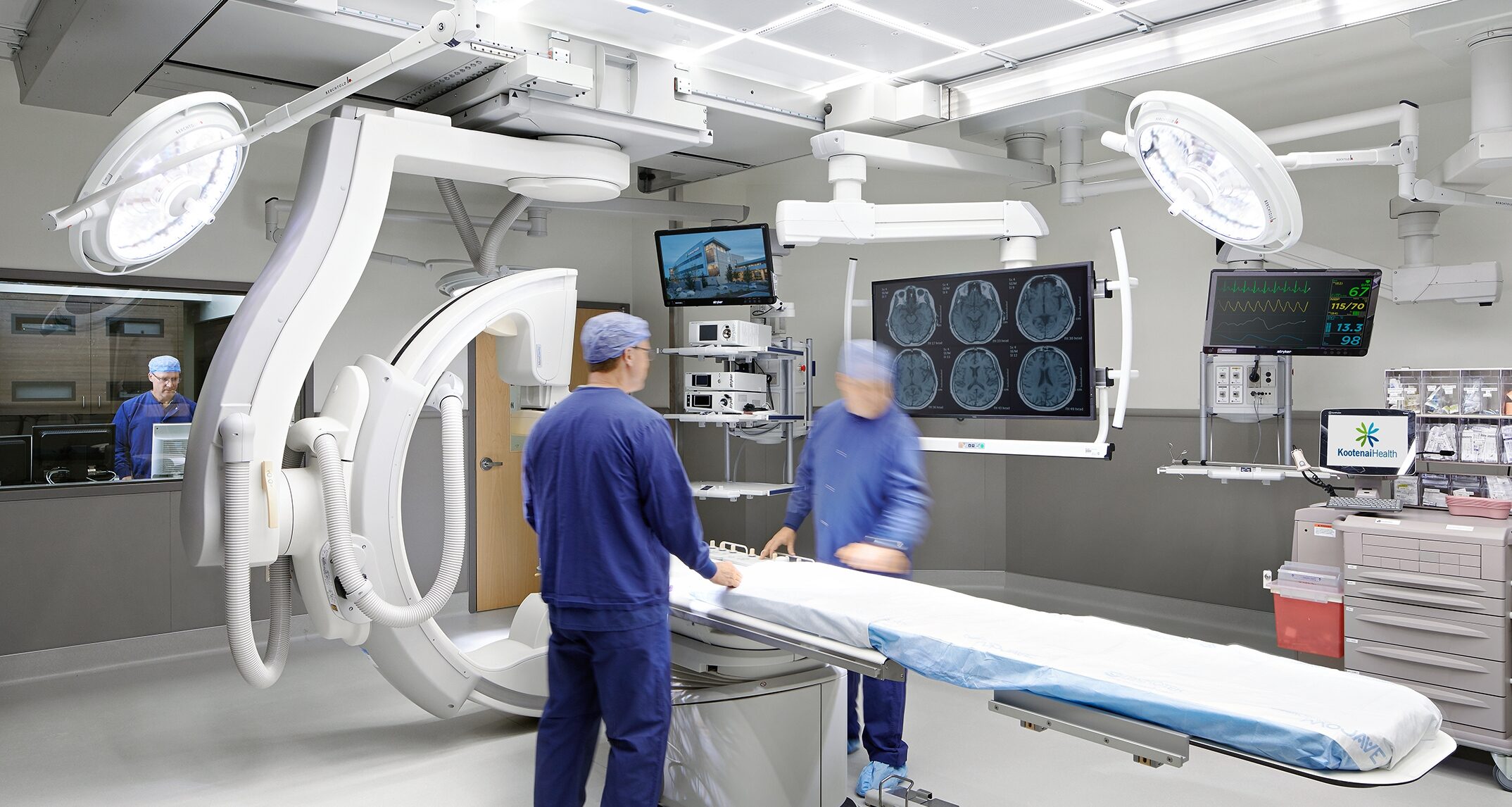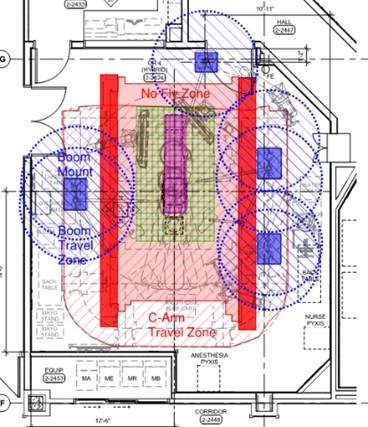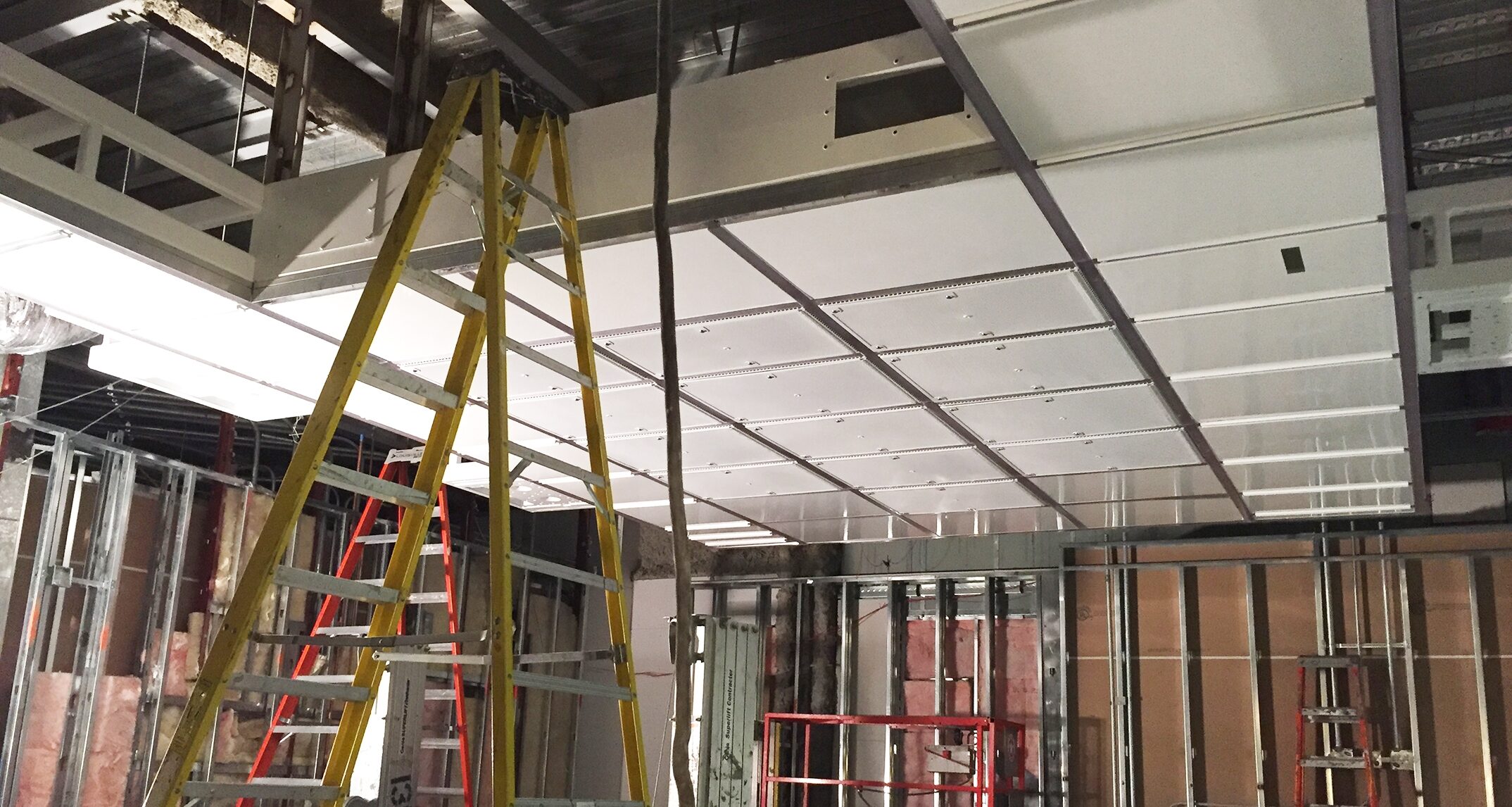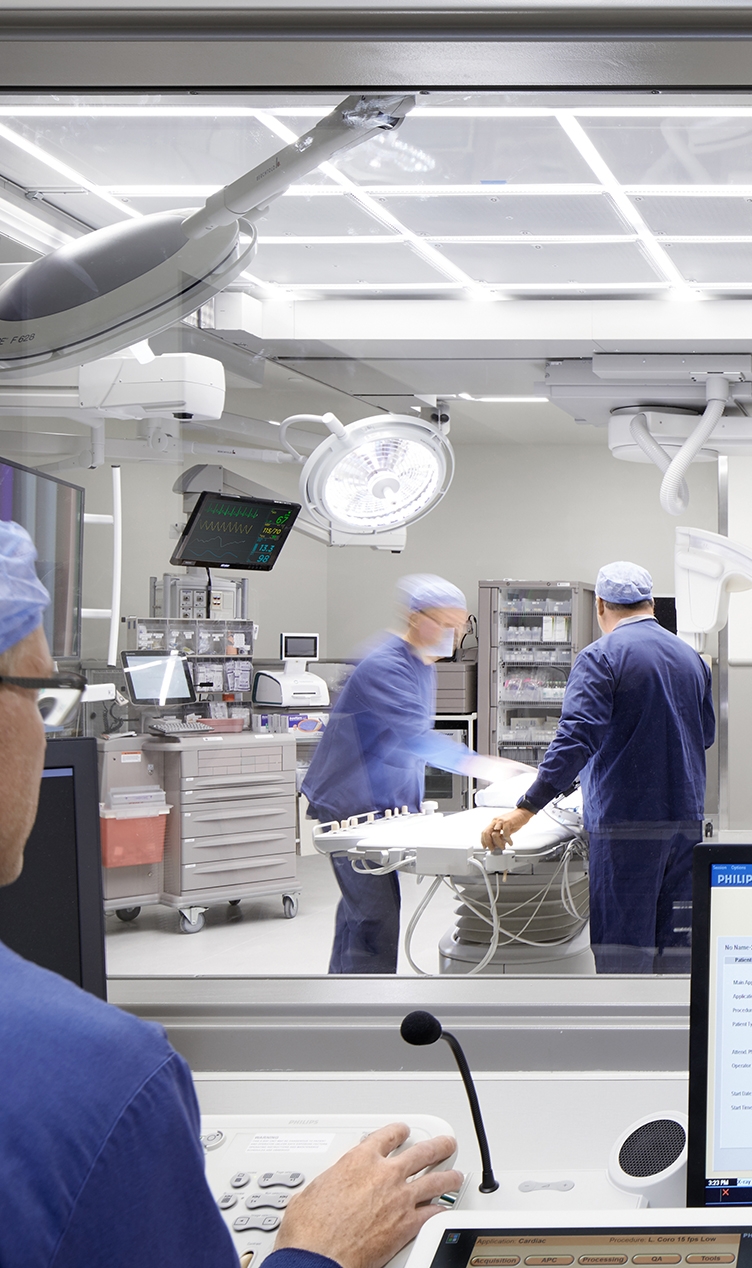Planning and Constructing a Hybrid Operating Room: Lessons Learned

On average, 51 Million surgical inpatient procedures are performed in the United States each year. With the increased focus on wellness, preventative, and team-based medicine, an introduction of new technology, and a change to patient outcome-based reimbursement, many traditional surgical procedures are evolving.
Our healthcare clients are continuously looking for ways to improve service delivery and offer the highest quality of care for their patients. As an architecture firm, we diligently track healthcare trends and emerging best practices to offer our clients cutting-edge design solutions that meet their program and operational needs, increase efficiencies, and enhance the patient experience. One trend that is quickly gaining momentum as an effective way to maximize procedural benefits and improve patient outcomes is hybrid operating rooms.
Hybrid Operating Rooms
A Hybrid operating room (OR) is an OR that is outfitted with advanced imaging equipment that allows surgeons, radiologists, and other providers to use real-time images for guidance and assessment while performing complex surgeries. A typical OR can use mobile imaging equipment, however it does not produce the high quality images that are needed for delicate procedures. A true hybrid OR will include a built-in C-arm X-ray, CT, or MRI machine.
By using this high resolution real-time imaging, hybrid ORs allow for more accurate and less invasive surgical procedures which lead to quicker patient recovery. Procedures that historically would require open-heart surgery can be accomplished with a minimally invasive interventional procedure, potentially reducing the recovery time by several weeks.
Not only is there a recovery time benefit to the patient, but safety during the procedure is also another advantage. If an emergency arises during an interventional procedure, it can quickly be revised to be an open procedure since the room is set up as a fully functional OR. No critical time is lost in changing equipment or transporting the patient to a different operating room.
The types of procedures performed in a hybrid OR are typically cardiac, vascular, and neurosurgery, but the variety and number of procedures is growing rapidly. When designing these types of facilities, it is critical to determine the primary use of the hybrid OR early in the decision making process.
Case Study: Kootenai Health Surgery Renovation
The multi-phase surgery renovation for Kootenai Health updated
every square foot of the surgery department, including eight traditional
operating rooms and one hybrid operating room.
Lessons Learned
Location, location, location. The location of the hybrid OR is critical; its efficiency depends on strategic placement. The procedures performed in the room will determine the location relative to other hospital functions, the equipment type needed, room size, patient and staff flow, and many more factors.

Space planning diagram for a hybrid OR. Kootenai Health – NAC
A hybrid OR was a high priority in Kootenai’s surgery renovation, but the initial funding did not include the build-out of the room. When the final decision to move forward with the hybrid room was made, the room that had initially been reserved for the hybrid OR had to be relocated to be adjacent to critical departments. Kootenai’s hybrid OR is primarily used for cardiac and vascular procedures, which required it to be in close proximity to the existing heart center, cath labs, and cardiovascular operating rooms. This revision required a shuffle of spaces after construction had started and many constraints were in place.
Every Square Foot Counts. Code requires a traditional operating room to have a minimum clear floor area of 400 square feet. A hybrid OR is required to be 1.5x as large, with a minimum clear floor area of 600 square feet. Because hybrid ORs require additional space for equipment and to provide flexibility for the types of procedures performed, these rooms typically average more than 1,000 square feet.
Due to existing constraints at Kootenai Health, the hybrid OR was limited to 715 square feet. While this is in excess of code minimum, it did require meticulous planning to ensure there was adequate space for imaging and surgical equipment, while still allowing a functional operating room.
| Key Technologies Needed in Hybrid ORs Include: | |
| Fixed angiographic imaging system | Heart-lung bypass machine |
| Hybrid operating table | Physiologic / hemodynamic monitor |
| Wall- and boom-mounted video display monitors | Contrast injector |
| Surgical and interventional lighting | Transthoracic and intravascular echo |
| Anesthesia machine | Surgical carts and storage systems |
Functionality is Key. In-depth coordination and planning is critical to ensure the equipment in the hybrid OR is correctly located and functional. Hybrid OR suites are comprised of up to 100 different medical devices and systems from multiple vendors.1
Kootenai Health selected a Philips Allura ceiling-mounted C-arm and Stryker booms, lights, and integration system. With four boom mounts that each contained multiple arms, the coordination between Philips and Stryker was essential. To function as an OR, laminar diffusers and lighting needed to be centered over the table. The fixed rails and mobile trolley for the C-arm created a large no-fly zone over the center of the room. This no-fly zone forces the boom mounts to be located towards the outside of the room and requires long arms to allow the lights and monitors to be brought to the correct location
Ceiling Height: Height requirement in a hybrid OR is similar to a typical OR, but there is additional equipment and light booms to support. A ceiling mounted imaging system will compound the above-ceiling supports required. The floor-to-floor height should be a minimum of 15'.
The existing structure at Kootenai Health’s hybrid location has a 17' floor-to-floor height. Even with this large interstitial space, supporting several booms and the large overhead imaging system still posed a challenge. Accommodating each individually would result in a maze of structural supports and braces that would make it extremely difficult to coordinate with the HVAC ductwork. The solution was to use an integrated ceiling system by SLD Technology. This system integrates the laminar flow diffuser, room lighting, boom support mounts, and even the support for the C-arm imaging equipment, all in a modular prefabricated system. The low profile and minimal field connections allowed ample room for existing ductwork and utilities to remain in place.

An integrated ceiling system in a hybrid OR houses all overhead equipment in a modular, prefabricated system. This minimizes conflicts with ductwork and utilities. Kootenai Health – NAC
Imaging Requirements: Each type of imaging equipment will have its own specific room requirements, such as lead shielding for the C-arm. The lead shielding detailing and installation for an OR is similar to a typical x-ray room, requiring a physicist's shielding design and construction using lead-lined gyp bd., doors & relites, and lead protection at all penetrations.
An OR may have additional equipment that is not standard in a typical x-ray room, such as the pass-through blanket warming cabinets located between the OR and the sterile core in Kootenai’s typical ORs. While lead-lined pass-thru warming cabinets are available, the desire to have standardized equipment manufacturers meant that the pass-through was revised to be a free-standing warming cabinet for the hybrid OR.

C-arm X-ray installations are the most common equipment installed in hybrid operating Rooms. Kootenai Health – NAC

In addition to the actual operating area, a hybrid OR required a separate control room and equipment room, which adds to the necessary square footage. Kootenai Health – NAC
The Future of Hybrid ORs
The hybrid operating room is essential for multi-disciplinary integration in the OR, combining diagnostics and surgery using a team of specialists, creating true team-based healthcare. As technology increases and more surgeries can be performed with minimally invasive interventional procedures, hybrid operating rooms continue to become more popular. These rooms will become standard in operating suites for new facilities. Incorporating hybrid ORs into existing structures will continue to be a challenge, which will require open communication, collaboration, acute attention to detail, and an experienced design team.
References
1 ECRI Institute (2015). Hybrid Operating Rooms. Retrieved from https://www.ecri.org/Documents/ White_papers/Hybrid_OR_MS15532.pdf
